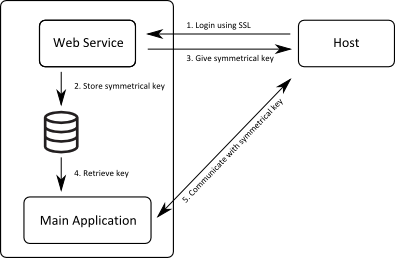-
Posts
76 -
Joined
-
Last visited
-
Days Won
3
OlivierL last won the day on July 21 2016
OlivierL had the most liked content!
Profile Information
-
Gender
Male
-
Location
Canada
LabVIEW Information
-
Version
LabVIEW 2009
-
Since
2003
Recent Profile Visitors
2,884 profile views
OlivierL's Achievements
-
wow, you are correct. That is how the feature is documented and implemented! Thanks for posting this. I can't understand why NI chose that implementation but it probably goes back a couple of decades and it might not have been intentional...
-
Hi, I wonder if this is a bug of LabVIEW or if I misinterpret the "Range" function in the case selector. In the VI Attached, a string is used to select a case in a Case Structure. there is a case for "0".."9" that LabVIEW accepts but if you input the string "9", LabVIEW executes the Default case. If you change the case to "0".."9", "9", then first of all LabVIEW doesn't return an error saying that values are not unique and it behaves as expected if you pass the string "9". Can anyone explain why LabVIEW would exclude the last value in the range? Cheers, Olivier Last Character Excluded From Range.vi
-
Looking forward to another NI Week and Lava G BBQ. Thanks a bunch David for posting on the other thread. I had given up after seeing no new messages by the end of June.
-
PY: Did you ever find a way to work around your problem? I found new information that may be useful to you. I played around some more with the functionality today and it really seemed that the invoke Node called "App:Disconnect From Slave" had to be called from within the RT target itself to work, as suggested on the NI forum. Then I tried some other tests to see if it is possible to Run a VI directly on a RT target (that is in your project). At first, I thought that it was not possible and couldn't figure it out until I found this link: http://forums.ni.com/t5/LabVIEW/Loading-and-Running-a-VI-on-a-cRIO-from-a-PC/td-p/796657 . I think that this actually gives you your solution by explaining that each target has its own application instance (also search for "Working with Application Instances" as a "Concept" in the LV[2014 in my case] help file). The way to acquire them is (or at least my way since I couldn't directly give the IP address of the RIO) was: - App-> Project.ActiveProject -> Targets -> [index proper one] -> Application -> "Disconnect From Slave" Notes: - "Project.ActiveProject" appears to be a VI scripting (bue background) - The "Application" property node is located near the very end of the list This silently disconnects the cRIO and may be able to remove your popup if done shortly after requesting the RT to restart. With the same App reference, you can also programmatically launch a VI to the Target from the Host (same as pressing the Run arrow with cRIO target selected.) It could definitely be useful for you as well if you need to delay the restart to prevent the pop up. I mean, Deploy your application to the CompactRIO with the "Run As Startup" enabled, then get the App reference and run a simple VI that resets the CompactRIO after a few seconds of delay. During that time, call the "Disconnect From Slave" Invoke Node and your pop-up should be gone... Let me know if this works for you!
-
Thanks. I should've added that the conversation moved to here: https://lavag.org/topic/19341-security-who-cares/page-2#entry116714
- 2 replies
-
- encryption
- web services
-
(and 2 more)
Tagged with:
-
Interesting read! Thanks for the link. I guess our situation is different than most others as we only need the tunnel for security. I'm sure that will change in the future so we'll keep an eye on the topic of interactive SSH sessions.
-
So a quick test definitely confirms that the MyRIO has SSH tunnel support enabled and a connection can be established from Windows using "plink.exe" (Putty) with System Exec. The command to System Exec: d:\Installed\Putty\plink.exe -ssh admin@192.168.0.66 -pw Passwrd -C -T -L 127.0.0.1:9988:192.168.0.66:8899 (9988 is the port on the Host/PC, 8899 is the port I open in LabVIEW on the target, 192.168.0.66 is the MyRIO address.) Neat, thanks for the heads up Shaun. This is a lot faster and easier than our original idea and it is my answer to your original question about my take on security for remote systems. Sidetracking a bit here but once we've launched a System Exec in the background (wait until completion? set to False), is there any way to get that process back and parse the information (output to stdout) or to stop it?
-
Is the screen shot a connection to a RIO unit? Have you been able to test down to port forwarding to the LabVIEW app running on the RIO? I'll try to find some time this week to do my own tests but your toolkit is interesting. For the VPN, it would only be to connect from our office to the client's LAN for example. For the dedicated Host PC, I understand it would only require SSH.
-
I posted on a separate thread because I thought the two topics differed enough but I'm happy to continue here. I totally missed the SSH option in conjunction with the VPN (for remote access.) That was the missing link that pushed us to think of a more creative workaround. Especially with the Linux boxes, I think that SSH and proper configuration of the firewall to only accept local connections should be good enough for us. The only caveat left in the chain is integrating the SSH client within the LabVIEW application. Fortunately, we would only need to support a single platform (Windows). Has anyone done it so that the username/passwords can be requested from within the application and the tunnel established over a .dll or command line utility? There appears to be a port of OpenSSH for Windows but it seems to run on Cygwin. Putty's command line utility (plink) could also be a good contender to create a tunnel which appears to be builtin the application? Using those standard tools would likely require a lot less development while offering proper encryption.
-
ShaunR's recent topic on Security reminded me of a situation we explored in the summer and need to revisit at some point. We were looking for a method to protect the communication with a cRIO. The situation is that we need to communicate between a cRIO and a host on an unsecured network (manufacturing environment.) We concluded that we needed some form of encryption as well as a standard login mechanism but identified that having a single symmetrical key would not provide enough protection (for various reasons and specific use cases.) Therefore, we looked into SSL and LabVIEW Web Services because it already includes that library and all the security features that we need. We figured out that it would definitely offer the protection required but that would mean rewriting most of existing code to use Web Service instead or establish some for of communication through a new Web Service. Considering the amount of unknown and risks associated with modifying our code, we looked into an alternative and came up with the following scheme: In short, we would use a Web Service for the initial login and create a new symmetrical key which would be passed to the host and to the main application on the target (cRIO) and would be used to encrypt/decrypt all data during the session. This way, we could still program all of our code in LabVIEW and easily download/deploy the services and applications to the Target using NI standard tools but benefit from proper security and only have to add fairly simple wrappers to some sections of our existing code. I wonder if anyone else has already gone down that route to add protection to an existing application. Would you suggest a different implementation method or an easier path to a similar result? Is there some obvious pitfalls in this approach that we do not see?
- 2 replies
-
- 1
-

-
- encryption
- web services
-
(and 2 more)
Tagged with:
-
We have used NS on a project recently with a cRIO and we found a few caveats that we were not expecting: The NS engine uses ~10% of each core on the cRIO (9067) as soon as a connection is established (we had three streams) There is also an impact on the host CPU, even if very little amount of data is transferred All NS are unidirectional and limited to one connection (based on your description, you are better off with TCP) The NS properly register that the end point is disconnected ONLY if the connection ends gracefully (completing executing on the Host for example.) If you disconnect the network cable, neither the Host nor the cRIO registered the problem automatically and the stream no longer worked when the cable was reconnected. You would need to build that yourself... Memory management in the NS is less than ideal. One of our NS was transferring arrays and we had set the depth of the NS to 100k elements. LV thought it was a good idea to go through each of the 100k in the buffer even is there was ever only 1 or 2 arrays in the buffer. The result was that both the cRIO and the PC were trying to allocate >1GB of memory space that it didn't really need. Sure, bad programming but you would hope for better reaction than what appeared, for the longest time, to be a memory leak. If your messages are long and you create a large buffer, expect to run into strange problems down the road for obscure reasons... I would suggest you go straight to the TCP method. It will require a little bit more work upfront but you will have more flexibility, less overhead on the CPU and the ability to handle multiple connections easily. NS is great at delivering a simple option to quickly get started with and streaming large amount of data in simple situation but doesn't offer much IMHO benefit over TCP when scaling up.
-

Subpanels: what are the rules for order of operations?
OlivierL replied to Aristos Queue's topic in LabVIEW General
You're right. If the same mechanism is used regardless of the option selected (Call & Forget / Call and Collect), there is a need for some mechanism that the "Proxy" VI fills. That makes sense. I'm still not going to move to ACBR but it is interesting to understand (or so we think) what's happening under the hood. Did Stephen ever find the solution to his issue throughout all this? -

Subpanels: what are the rules for order of operations?
OlivierL replied to Aristos Queue's topic in LabVIEW General
Yes it keeps running. So why does the ACBR keep running in your case and not the "Run VI"? My guess comes from different implementation of the two methods. Whereas "Run VI" launches the Sub VI as a Top Level VI, "ACBR" actually creates a proxy (Use "Call Chain" in your SubVI to see this). That special Proxy VI then calls the SubVI as a subVI instead of a top level VI. Therefore, another references is created (in the Proxy) to the subVI so even if you close the original reference, the Proxy keeps running and keep Sub VI in memory. In the case of RunVI, if you close the reference, then the SubVI (Running as "Top-Level") becomes identical to any other Top Level VI and stops since no reference is opened and FP is closed, stops its execution. I ran another test and I was surprised by the result; If you do not close the reference, in both cases, Blinker.vi keeps running (I removed the error from the Queue stopping the While loop) in the background. I thought that it would be aborted by the ACBR ("Run VI" actually runs as a top level VI so I expected it to behave as such, with no knowledge of the VI who launched it.) I assumed that the Proxy's reference would be tied to the calling VI but it is not. Moreover, the behavior (Blinker.vi keeps running) is the same whether you close the original reference or not! "Proxy" appears to have no knowledge of the caller ("subpanel test ABCR.vi") status. Now that I think about it, I guess this makes sense as it is the behavior I've seen within the Actor Framework where the Actors keep running in the background under certain debugging cases.




